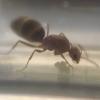Hello everyone. I'm fairly new to ant keeping, this season will mark the beginning of my second year. I have had a colony of Solenopsis Invicta almost the whole time. Living in South Florida, and understanding that they originate from South America I have come to understand that this species is very intolerant of cold. I bought a small heating mat and a Sensor Push online, unfortunately, I had a problem with the heating mat (darn euro plug) and ended up leaving them in the cold a few more nights then I would think that they could tolerate. this includes last night where it got as low as 49 degrees fahrenheit. Has anyone else known of this species being able to tolerate cold of this kind?
- Formiculture.com
- Forums
- Gallery
- Members
- Member Map
- Chat





















